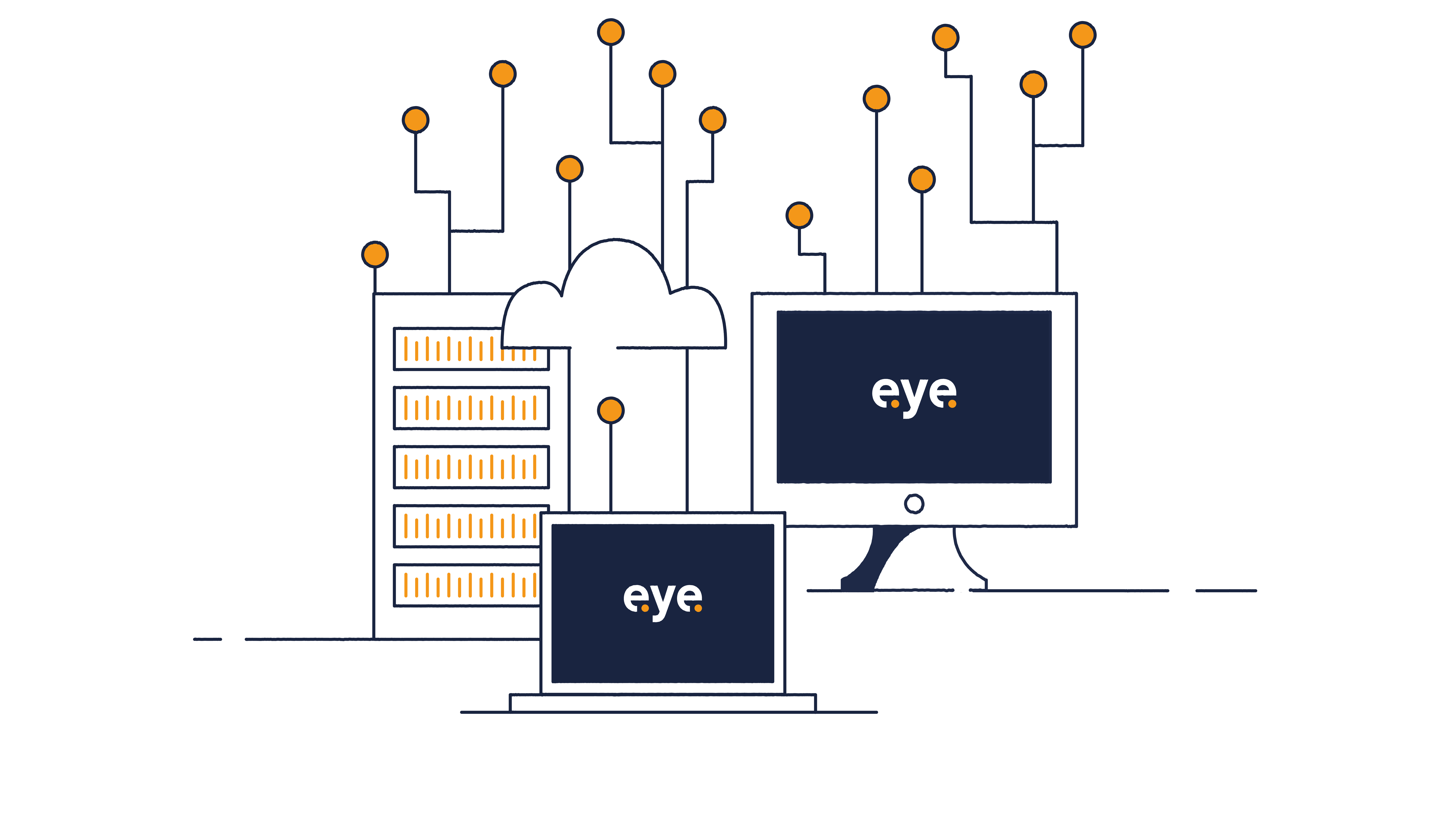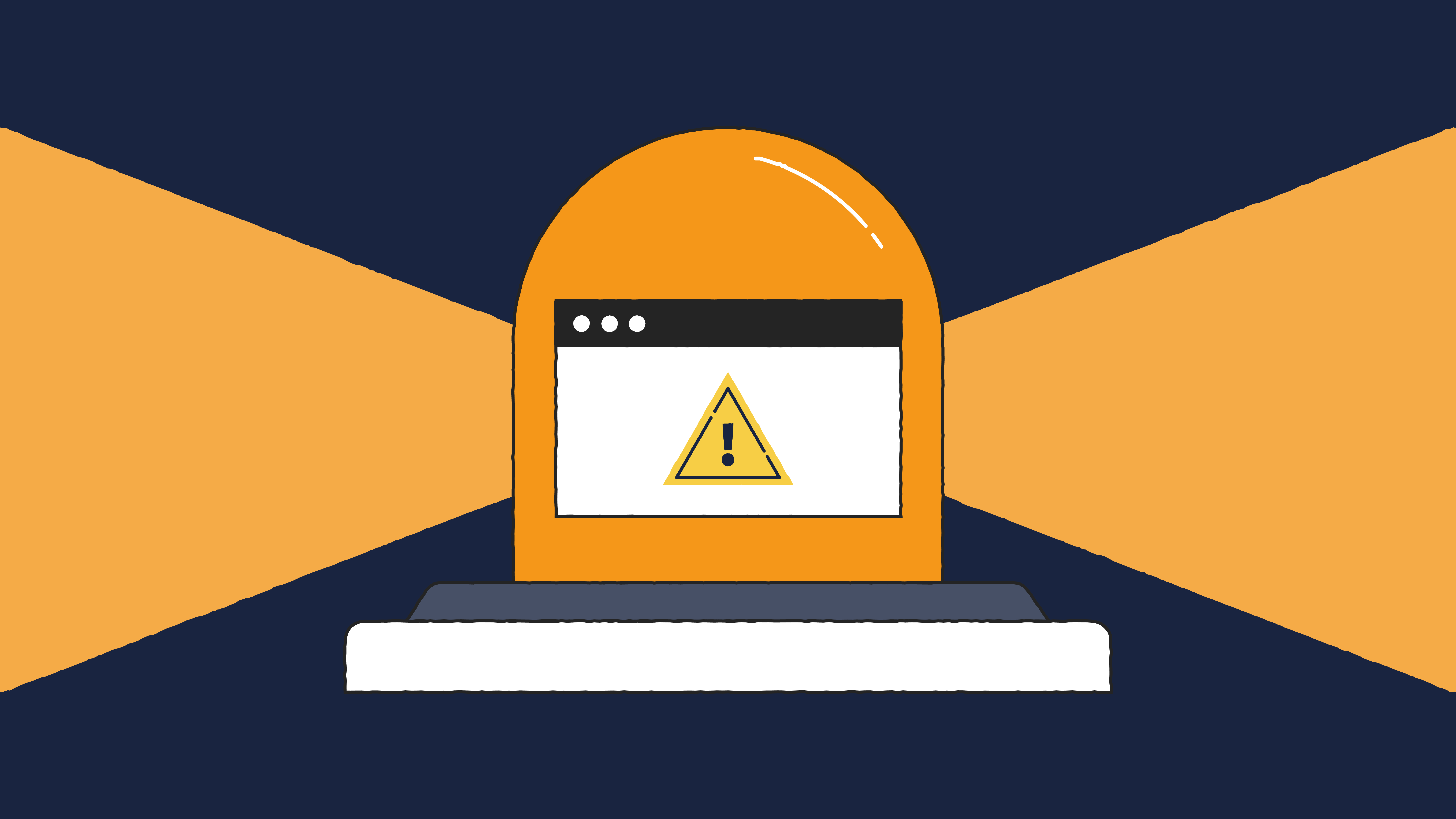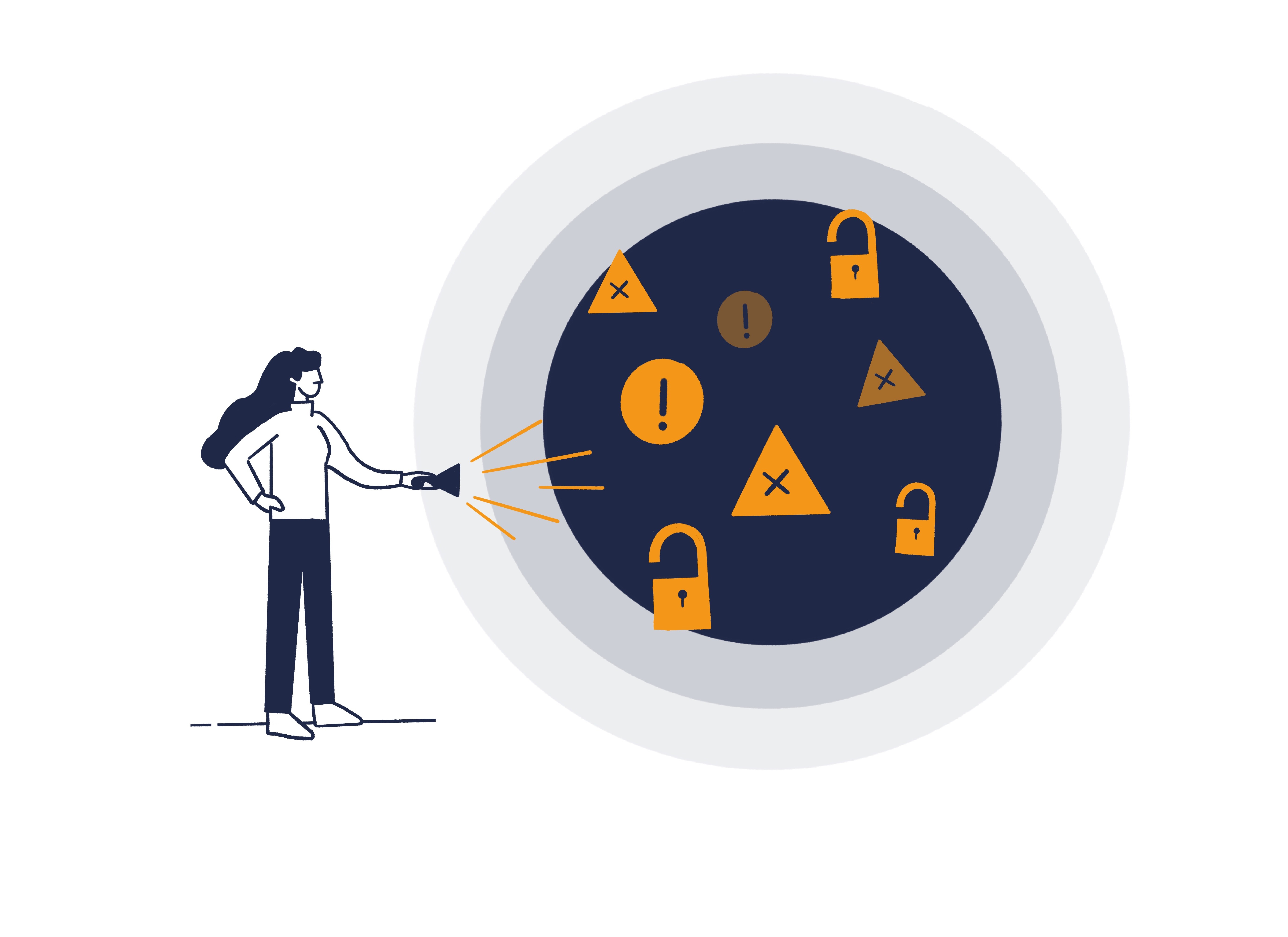SOC-as-a-Service, or SOCaaS, is a cybersecurity solution that leverages third-party expertise, typically in the form of a Security Operations Centre (SOC), to give organisations real-time insights into their digital environments. These third-party providers, often offering managed security services, enable comprehensive and continuous, 24/7 monitoring of an organisation’s digital environments to thwart threats and respond to incidents in real time.
SOC-as-a-Service employs a SaaS model, leveraging a centralised cloud infrastructure and various levels of automation to make SOC more accessible, particularly for SMEs. Essentially, SOC-as-a-Service provides immediate access to cybersecurity specialists and eliminates the need for substantial upfront investments typically required for an in-house SOC.
Understanding Security Operations Centres (SOCs)
A Security Operations Center (SOC) is a centralised unit dedicated to monitoring and managing an organisation’s security posture in real-time. It plays a crucial role in cybersecurity strategy by enabling the detection, analysis, and response to security incidents. A SOC typically comprises a team of security professionals, including security analysts, threat hunters, and incident responders, who collaborate to identify and mitigate security threats.
The primary goal of a SOC is to protect an organisation’s sensitive data and prevent security breaches. To achieve this, a SOC employs a combination of security tools, such as Security Information and Event Management (SIEM) systems, threat intelligence platforms, and Security Orchestration, Automation, and Response (SOAR) tools. These tools empower the SOC team to monitor security events, detect threats, and respond to incidents promptly and effectively.
Organisations can choose to operate a SOC in-house or outsource it to a managed security service provider (MSSP). Outsourcing a SOC can provide access to specialised security expertise and advanced security tools, which might be cost-prohibitive to implement internally.
Additionally, managed security services enhance security operations by providing specialised skills and resources, addressing internal skill gaps.
The evolution of security monitoring systems
Initially, organisations relied on standalone security tools to manage threats, leading to fragmented monitoring. Over time, the integration of Security Information Event Management (SIEM) allowed for more comprehensive and cohesive security management. SIEM systems are designed to collect, manage, process, and analyse log, system, transaction, network, intelligence, and activity data at very high speeds.
The evolution continued with SOCaaS as an outsourced model for threat detection and incident response. SOC-as-a-Service enables organisations to leverage third-party expertise to monitor security events and respond to threats without maintaining an on-premises team.
What are the key elements of a SOC?
A security operations centre (SOC) requires several components to effectively protect an organisation from cyber threats.
Automation and orchestration tools
These help reduce the workload of analysts, increase the speed and accuracy of incident response, and streamline coordination among various technologies. Automated processes within a SOC enhance efficiency by reducing manual tasks and enabling rapid response to security alerts.
Automation delivers the following benefits:
- Streamlined incident response
- Reduced manual tasks
- Enhanced operational efficiency
- Optimised resource utilisation
- Reduced costs
Robust vulnerability management
A comprehensive vulnerability management program includes regular vulnerability scans, effective patch management, and continuous risk assessments.
Collaboration
Effective collaboration involves cooperation with the organisation's security team, as well as with external entities like law enforcement agencies and other security organisations.
What are the SOCaaS roles and responsibilities?
SOCaaS (Security Operations Center as a Service) offers organisations access to a fully-managed SOC. The roles and responsibilities of a SOCaaS provider encompass several areas:
-
Security monitoring and incident response: The SOCaaS provider continuously monitors an organisation’s security events and responds to incidents in real-time, ensuring rapid mitigation of threats.
-
Threat detection and analysis: Utilising threat intelligence and advanced security tools, the SOCaaS provider detects and analyses security threats, providing actionable insights to safeguard the organisation.
-
Vulnerability management: The SOCaaS provider identifies and remediates vulnerabilities within the organisation’s security posture, ensuring that known and evolving vulnerabilities are addressed promptly.
-
Compliance and risk management: Ensuring that the organisation’s security posture complies with relevant regulations and standards, the SOCaaS provider helps manage compliance and mitigate risks.
-
Security awareness and training: The SOCaaS provider offers security awareness and training programs to educate employees about best practices and emerging threats, enhancing the overall security culture within the organisation.
By tapping into the expertise and resources of a SOCaaS provider, companies enhance their security posture, ensuring comprehensive protection against cyber threats.
What are the benefits of SOC-as-a-Service?
Security Operations Center as a Service (SOCaaS) offers organisations a new way to manage threats and respond to incidents via external SOC teams. Managed SOC services offer numerous advantages, including access to expert security staff, lower total cost of ownership, and improved cyber maturity. In this section, we sketch out the benefits that SOC-as-a-Service brings to organisations and why it is becoming an increasingly popular choice for effective security management.
Instant access to specialised security expertise
Partnering with a SOCaaS provider offers immediate access to specialised security expertise. This is especially beneficial for organisations without a strategic plan for in-house talent acquisition.
The dedicated team of analysts within a SOCaaS framework responds to cyber threats and vulnerabilities in real time, removing the time burden from in-house teams.
Faster threat detection and remediation
Another key benefit is always-on threat detection and remediation. With cybersecurity experts being available 24/7, SOC-as-a-Service enhances an organisation’s visibility into its environment as it allows real-time analysis of security data, identification of anomalies, and immediate detection of potential threats. SOCaaS providers typically combine state-of-the-art advanced analytical capabilities, AI-powered tools, and human expertise to improve an organisation’s ability to respond swiftly to incidents.
Enhanced security programme maturity
The efficient handling of cyber threats and vulnerabilities allows organisations to focus on strategic decision-making and maintain a robust security posture without the extensive resource investment required for an in-house SOC.
Reducing false positives
False positives can pose a significant challenge for security teams, diverting attention from real security threats and consuming valuable resources. SOCaaS can help mitigate this issue by employing advanced security tools and threat intelligence to accurately detect and analyse security threats. SOCaaS providers also offer the expertise of trained security analysts who can identify and respond to security incidents effectively.
Additionally, SOCaaS provide organisations with access to Security Orchestration, Automation, and Response (SOAR) tools. These tools automate the incident response process, reducing the likelihood of false positives and streamlining the management of security incidents. SOAR tools offer a centralised platform for security teams to coordinate their efforts, ensuring a more efficient and effective response to threats.
In sum, SOCaaS offers a cost-effective and efficient solution for managing an organisation’s security posture, significantly reducing the risk of false positives and enhancing the ability to respond to genuine security threats.
Managed SOC vs. in-house SOC
Choosing between a managed SOC and an in-house SOC is a pivotal decision for an organisation’s cybersecurity strategy. Building a SOC from the ground up can be costlier than collaborating with a managed services partner due to the need for sourcing technology, personnel, and managing potential churn. Below we compare the cost considerations and complexities involved in both approaches.
Cost comparison and considerations
Building a SOC from the ground up can be more costly than engaging a managed services partner, primarily due to the extensive resources required.
|
Factor |
In-house SOC |
Managed SOC |
|
Initial setup costs |
High—includes hardware, software, and staffing |
Lower—no need for infrastructure investment |
|
Operational costs |
High—ongoing training, salaries, and benefits for staff |
Lower—covered by the service provider |
|
Maintenance costs |
High—involves continuous system updates and upkeep |
Included in service fee |
|
Expertise and training |
High—requires investment in continuous education and certifications |
Included in service fee, access to specialists |
|
Scalability |
Limited—scaling up requires significant additional investment |
More flexible, scalable as per needs |
The complexities of establishing a full-scale SOC
Setting up and maintaining a robust in-house SOC involves several complexities that can be particularly prohibitive for smaller companies:
- Technology and infrastructure. An effective SOC requires technology and infrastructure, including high-quality servers, cybersecurity tools, and advanced software solutions. The initial setup and continuous upgrades are complex and costly.
- Skilled personnel. Recruiting and retaining skilled personnel is a challenge. A SOC requires a dedicated team with diverse expertise in threat detection, incident response, and various cybersecurity tools.
- 24/7 monitoring. Effective SOC operations need round-the-clock monitoring, which means staffing for multiple shifts and always having resources available.
- Regulatory compliance. Organisations need to ensure compliance with various regulatory standards, which can be daunting without specialised knowledge. Managed SOC services may incorporate compliance as part of their offering.
- Continuous advancement. Keeping current with the latest innovations is essential but requires continuous learning and adaptation.
Given these complexities, many organisations find that SOCaaS not only reduces costs but also mitigates the challenges associated with maintaining a full-scale, in-house operation.
Conclusion and outlook
Building and maintaining an in-house SOC demands significant financial and personnel investment. SOC-as-a-Service (SOCaaS) presents a compelling alternative for organisations seeking to enhance their cybersecurity posture. A managed SOC provides access to the latest technologies and best practices within a streamlined service model. By leveraging the expertise of external cybersecurity specialists, organisations benefit from faster threat detection, specialised knowledge, and enhanced security programme maturity.



